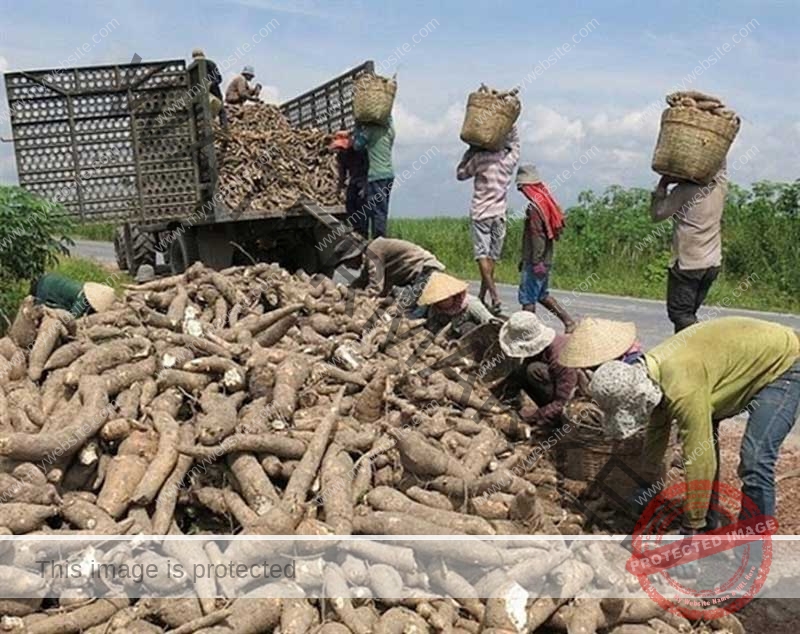Cassava is a staple food for over 800 million people in approximately 80 countries, mostly in sub-Saharan Africa, but also in Asia, the Pacific and South America. Cassava contains cyanogens, which protect against pests and predators by producing cyanide. So-called bitter varieties produce more cyanide, and the roots of these varieties need to be processed before eating. The traditional methods, such as soaking and sun-drying, vary in their efficiency, and hunger may force people to take short cuts. The resulting cyanide exposure can cause acute cyanide poisoning, goiter, and paralytic disease konzo. An estimated 2.5 million people in six countries in Africa live in communities vulnerable to konzo.
Cassava is classified as either sweet or bitter. Like other roots and tubers, both bitter and sweet varieties of cassava contain antinutritional factors and toxins, with the bitter varieties containing much larger amounts. It must be properly prepared before consumption, as improper preparation of cassava can leave enough residual cyanide to cause acute cyanide intoxication, goiters, and even ataxia, partial paralysis, or death.
Junji Takano, a Japanese health researcher, explains that the toxin in cassava is called “linamarin”. It is chemically similar to sugar but with a CN ion attached. When eaten raw, the human digestive system converts this to cyanide poison.
It sounds pretty scary. But what is proper preparation? How do you detoxify cassava before eating it?
Researchers have found that the cyanide content of cassava differs among varieties. Once harvested, bitter cassava must be treated and prepared properly prior to human or animal consumption, while sweet cassava can be used after simple boiling.
Most cultures that traditionally eat cassava, generally understand that some processing (soaking, cooking, fermentation, etc.) is required. But most people don’t realize that the preparation is absolutely necessary in order to avoid getting sick; and not just a choice of preparation by the chef.
The root which is edible contains lower cyanide compared to the peels. Therefore, some of the methods that can be used to reduce the toxicity of these cassava tubers
Main Methods to Remove Toxicity
Comparison of the different processing techniques
Methods involving grating and crushing are usually very efficient in cyanide removal because they completely rupture plant cells of cassava and allow direct contact between linamarase and linamarin. However, sun-drying and heap fermentation are less efficient because peeled roots are usually cut in half longitudinally and most of the plant cells remain intact. Hydrolysis of cyanogenic glucosides is prevented or reduced because linamarin and linamarase are located in different compartments of the plant cell. Heap fermentation retains half the cyanide of sun-drying because of the presence of microflora that can break down the linamarin during the fermentation process.
Boiling, which is relatively inefficient for removing cyanide (50%), is much more efficient than baking, steaming, or frying (15% to 20% of cyanogen removal). Even if linamarase is inactivated at high temperatures (100 °C), cyanogens are water-soluble and, therefore, they can be removed during the dewatering process.


